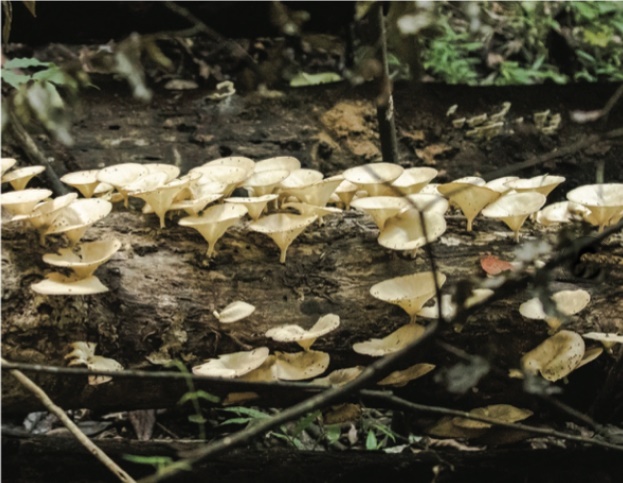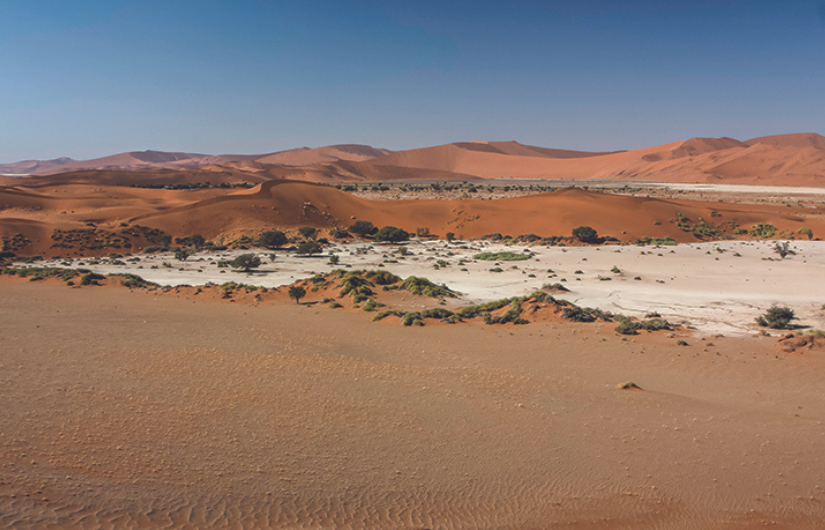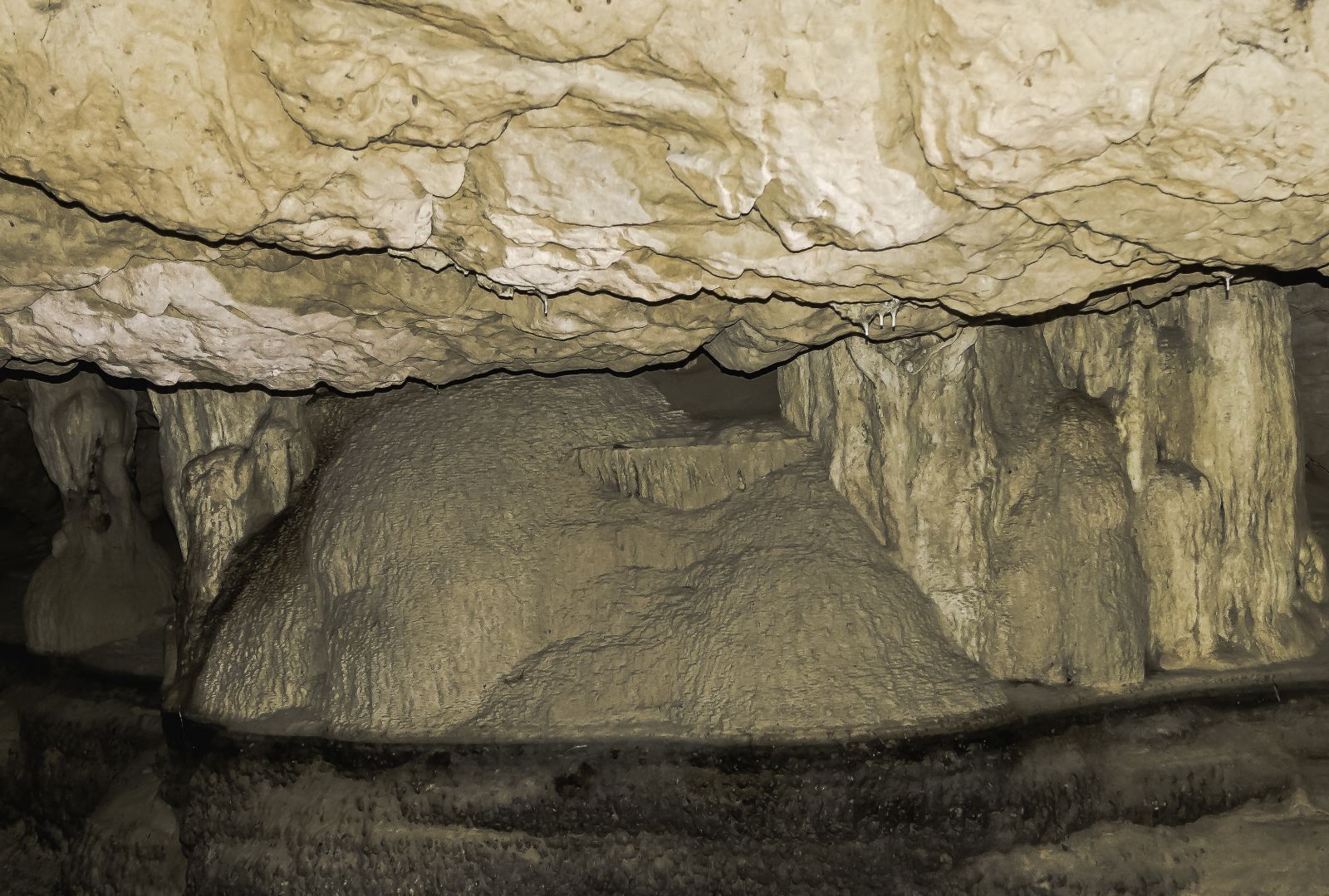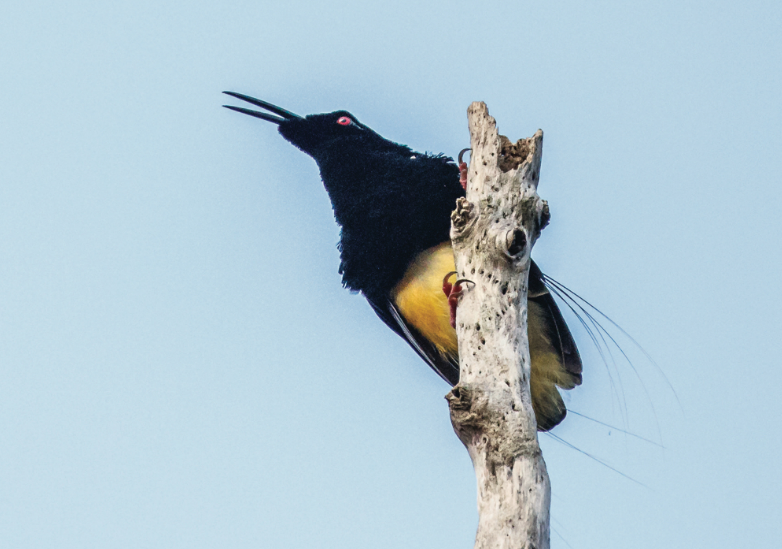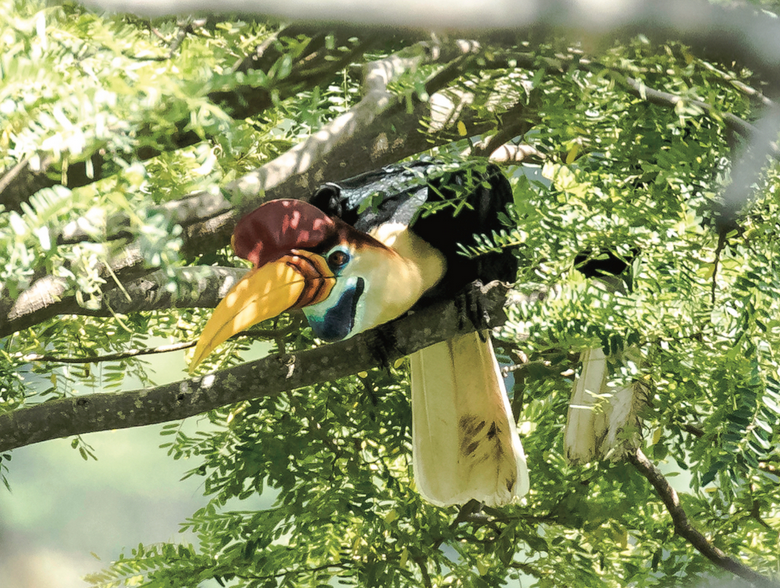Pongpol Adireksarn continues his exploration of this Indonesian island to find more exotic wildlife that few have had the opportunity to see and photograph, which he shares here. My venture into the jungle of North Sulawesi in Indonesia to search for rare and endemic wildlife continued into my second day in Tangkoko Nature Reserve. May I mention again that the main objective at Tangkoko was to find the Sulawesi crested black Macaque which has been classified by the International Union on Conservation of Nature (IUCN) as a critically endangered species. Its population has been reduced drastically to less than 2,000 macaques, which are found mostly in Tangkoko Nature Reserve.
.jpg)
We entered the reserve at 7:30 am heading on foot toward the site where about 60 Sulawesi crested black macaques were sleeping every night. Our guide expected to reach there before those macaques woke up and moved to the beach in search of food. After forty minutes we arrived at a group of big trees surrounded by open areas covered with fallen leaves but not a single macaque was sighted. The guide pointed at those trees and told me that most of the macaques slept there while some of them preferred the ground cushioned by thick layers of leaves. They were now on their way to the beach foraging for food of various kinds washed ashore by incoming waves.
We followed on the trail which revealed spoor of a large number of macaques passing through. Although the crested black macaques sleep and search for fruits and leaves in trees, they spend 60% of their daily activities on the ground foraging for food and socializing. Their main diet are fruits, but they also eat leaves, buds and seeds. On some occasions they consume birds, bird eggs, beetles, caterpillars, worms, snails, even lizards and frogs.
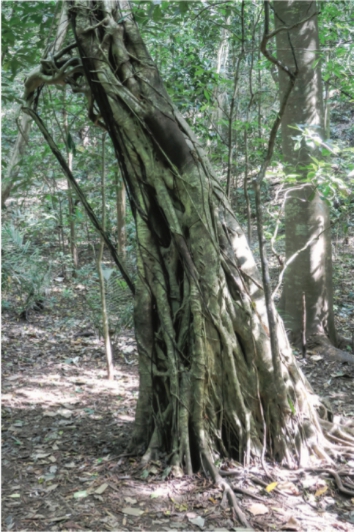
After twenty minutes, the trail led us into a forest fringing the sea. We saw movement in the trees and caught glimpses of black figures leaping among trees away from us. The guide gestured us to halt for a few minutes so that the macaques would not be alarmed by our sudden approach. As we stood resting on the track, two macaques returned to nearby trees and curiously observed us. I was holding my camera close to my chest and slowly raised it to fire a few shots to test their reaction. One macaque stared at me but showed no sign of alarm and continued eating fruit from the tree.
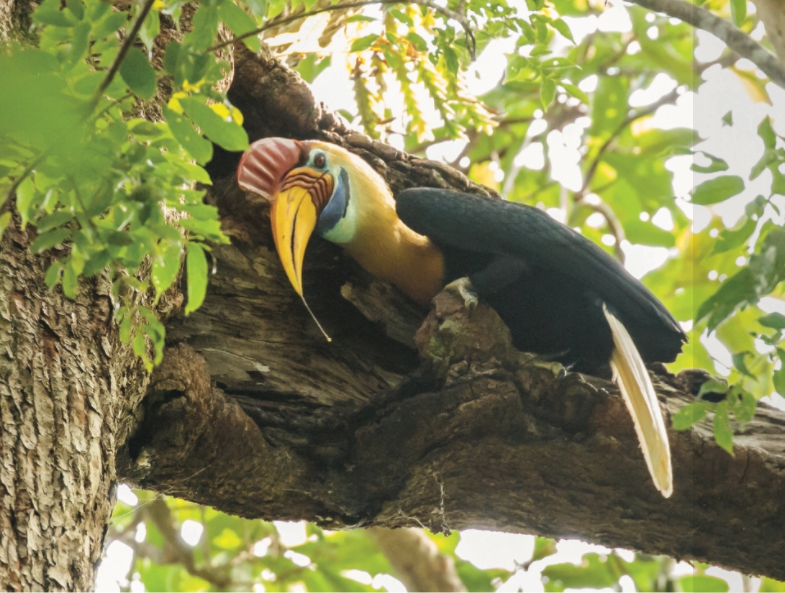
The guide nodded at us to resume our walk toward the beach ahead. As we approached the black-sanded beach, fifty meters away troops of the macaques with jet-black coats began emerging from the edge of the forest and spread out searching for food. We were looking at one of the smaller species of macaques in Indonesia. My first impression was that of a small ape, a primate without tail, with head-to-body length of 50-60cm. However, at closer observation, a tail which was a stub of only 1-2cm long became evident. What caught my eyes was a distinctive heart-shaped bottom of pink colour surrounding the tail. Another eye-catching feature of this unique macaque was a shock of stiff hair shooting up to form a crest on the crown of its head.
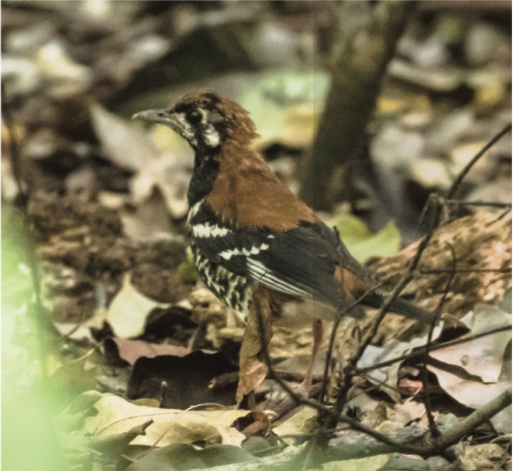
Once the macaques accepted our presence on the beach as we began taking photos and moved around casually, they came closer to look at us, at our cameras and our backpacks with curiosity. We spent the whole morning pleasantly with those intelligent and harmless creatures until the sun became stronger as noon was approaching. Then, the macaques began to retreat to the shade of the nearby trees and gradually disappeared into the forest.
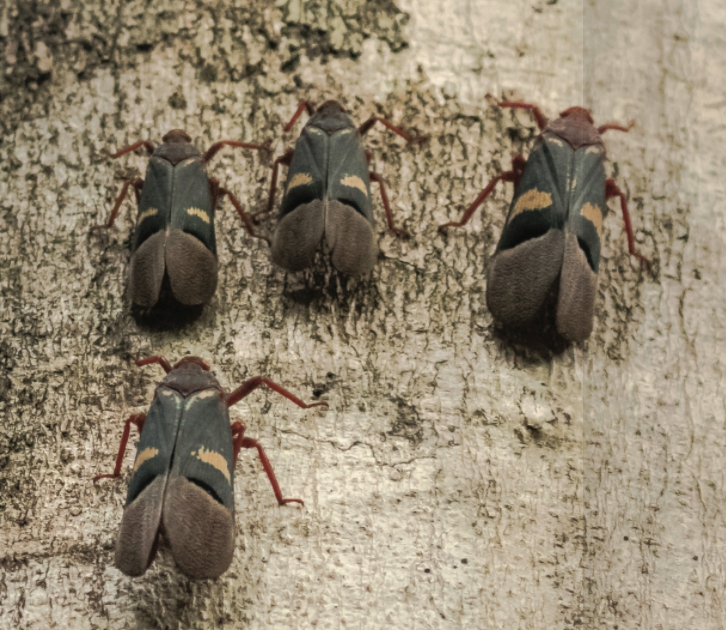
After lunch at the lodge, we ventured back into the reserve searching for another iconic wildlife species of Tangkoko – the spectral tarsier, the smallest primate in the world. Our guide led us on a forty-minute walk through the forest until we reached a large banyan tree where a family of spectral tarsiers nested. Tarsiers are nocturnal predators that hunt at night for insects, rodents and small birds. I asked our guide whether the tarsiers would appear out of the nest in daytime. The answer was that the tarsiers were curious in nature, and the presence of humans talking near their nest would provoke them into coming out to see what was happening.
.jpg)
As we waited patiently for thirty minutes, a spectral tarsier eventually emerged from a hole in the tree and stood looking around. Being a nocturnal creature, the tarsier needed a few minutes to adjust its vision to daylight. It was definitely the smallest mammal in the world with a head-to-body length of only 9.5 to 14cm and a tail of 20 to 26cm. A male weighs 118 to 130 grams while a female’s weight is 102 to 114 grams. Because of its small size, nature has compensated by creating essential defensive organs such as two very large eyes enabling a tarsier to see more sharply at night than any other mammal. Besides, a tarsier’s head can turn around 180 degrees, and a tarsier can jump a distance 40 times its body’s length. As if to confirm such capability, that tarsier suddenly leapt to a tree five meters away. A tarsier newborn can see and climb a tree one day after it was born.
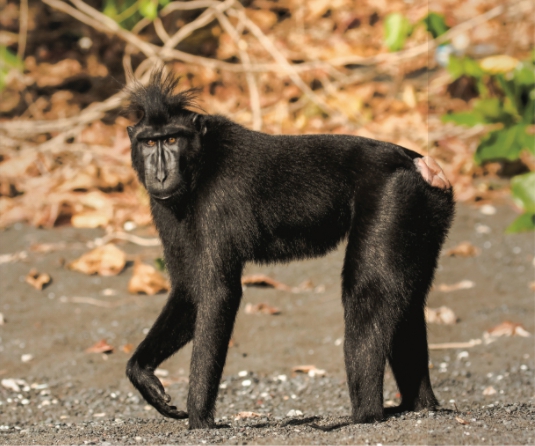
The spectral tarsier, whose lifespan in the wild is 17 years, has been classified by the IUCN as a vulnerable species because its population continues to decrease due to poaching and its habitat encroached by humans’ agricultural activities. On the positive side, the spectral tarsier has been proclaimed as the provincial mascot of North Sulawesi.
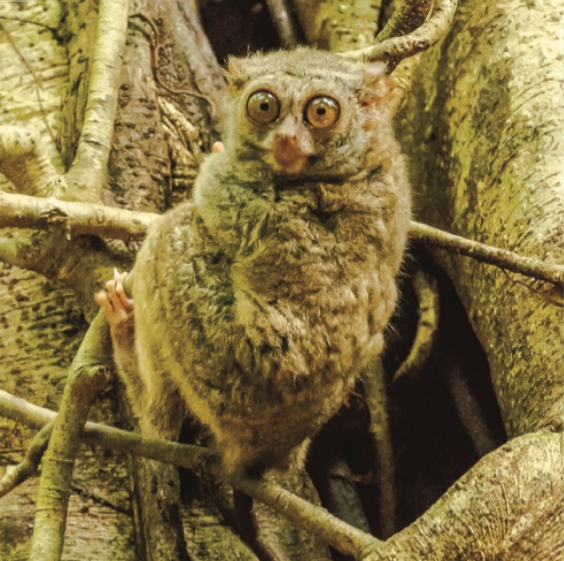
Our guide informed us that nearby to the roost of this spectral tarsier family was a Sulawesi red-knobbed hornbill’s nest where a female sealed itself inside incubating an egg. The male would come regularly to bring food for the female and feed her through a small opening of the nest. Having taken enough photos of the spectral tarsier, we decided to move on to the Sulawesi red-knobbed hornbill’s nest.
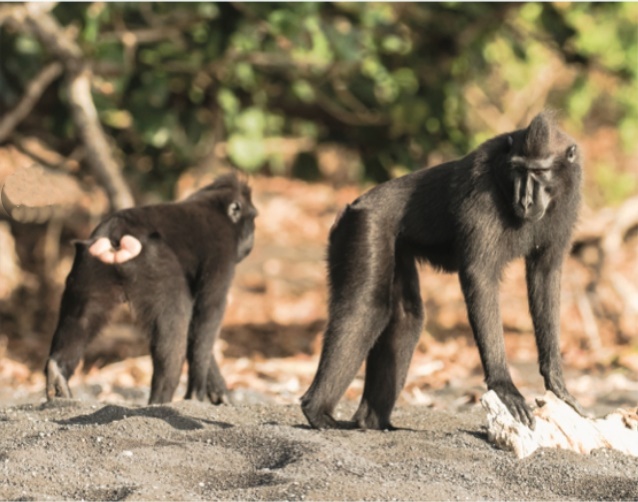
After a short walk, we arrived at a large, tall tree. The guide pointed at a big branch high up near the crown of the tree which was empty at the moment. He said the male had gone to find food and would return shortly to that branch which was adjacent to the nest. Half an hour later, while we’re sitting quietly on the ground near that large tree, the guide approached us and said in a low voice that the male hornbill had returned. We looked up at the big branch and saw a large black hornbill with a rufous and buff face and neck and a yellow bill with a high red casque on top standing on the branch. We learned from the guide that the female would have a black face and neck, a yellow bill and a yellow casque. The male with fruit in its bill moved closer to the nest which was on the other side of the tree obscuring our view.
.jpg)
The Sulawesi red-knobbed hornbill, a large bird of 70-80cm in length, is endemic to Sulawesi and nearby islands. It’s classified by IUCN as a vulnerable species due to habitat loss from logging, which deprives the hornbill of large trees for breeding.
We started walking through the forest back to the gate satisfied with the three iconic and endemic wildlife species we found today at Tangkoko. On the way, we sighted the rare and endemic Sulawesi red-backed thrush which is very elusive and therefore challenging to photograph. A few moments later we spotted a lilac kingfisher, also known as the Celebes flat-billed kingfisher, another endemic bird of Sulawesi.
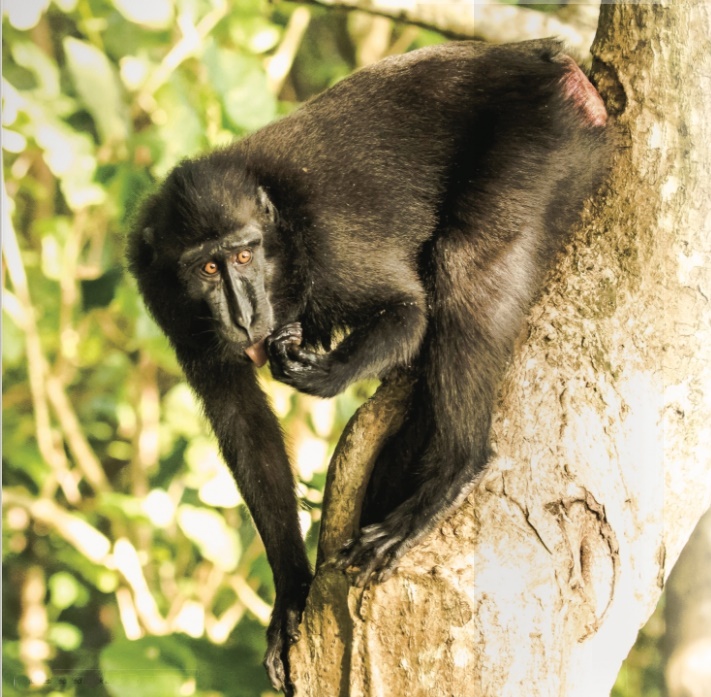
We also saw an eye-catching male Malayan birding butterfly which had black and dark brown upper sides of the forewings, while the upper sides of the hind-wings were golden yellow with black spots at the edges. As we passed by a large tree, the presence of four lantern bugs on the trunk grabbed our attention. We stopped to take a few photos. When we moved to the other side of the trunk, we found a big dark grey spider called the Sulawesi black tarantula. It was a large female with a leg span of 25cm and a carapace length of more than 3cm. After taking enough images, we let it be and continued our walk.
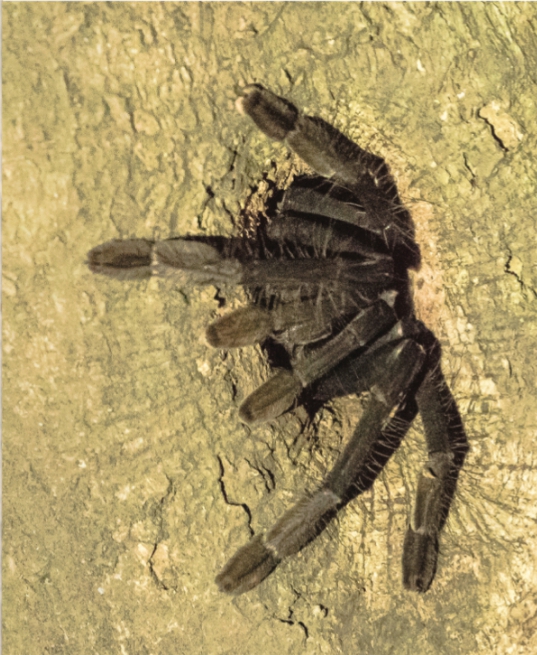
Our return path came across a few interesting plants such as several margarita- champagne-glass mushrooms growing on a fallen log and the whitest giant arum jutting out from the ground. Our visit to Tangkoko Nature Reserve in North Sulawesi was truly memorable as evident by the attached photos of rare and endemic wildlife species. I now look forward to continuing the trip to my next destination at Lore Lindu National Park in Central Sulawesi.


